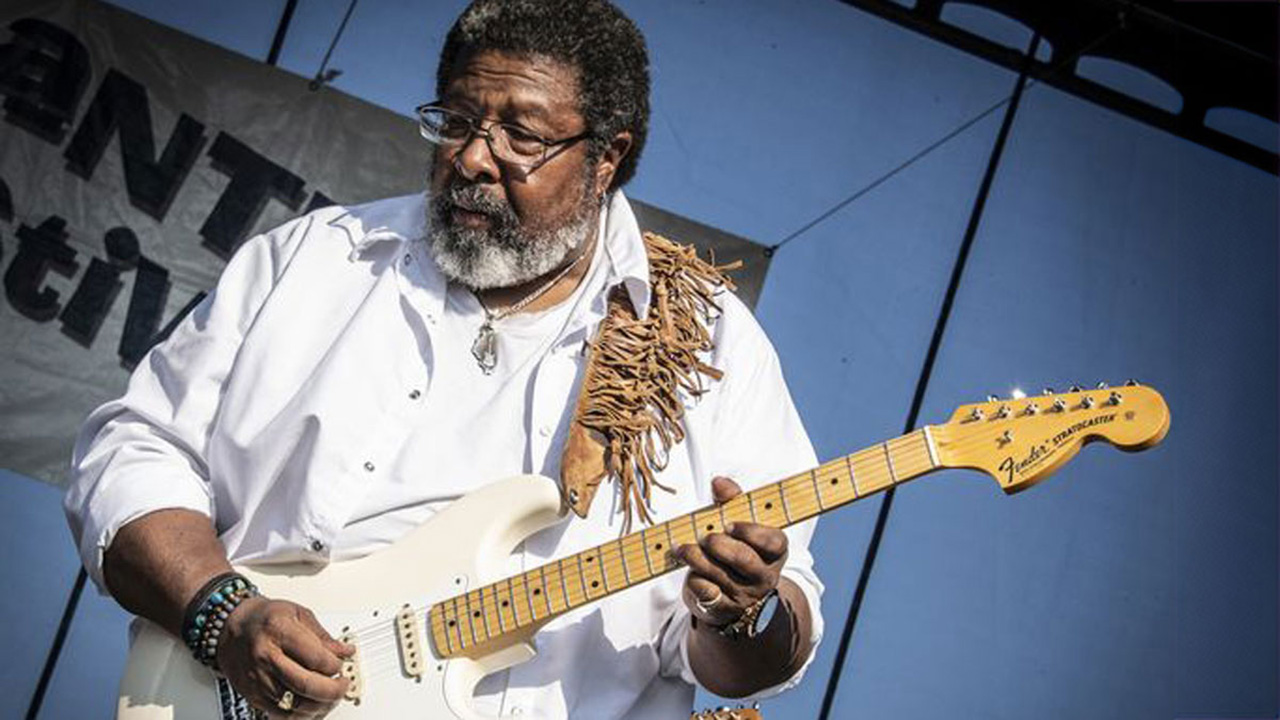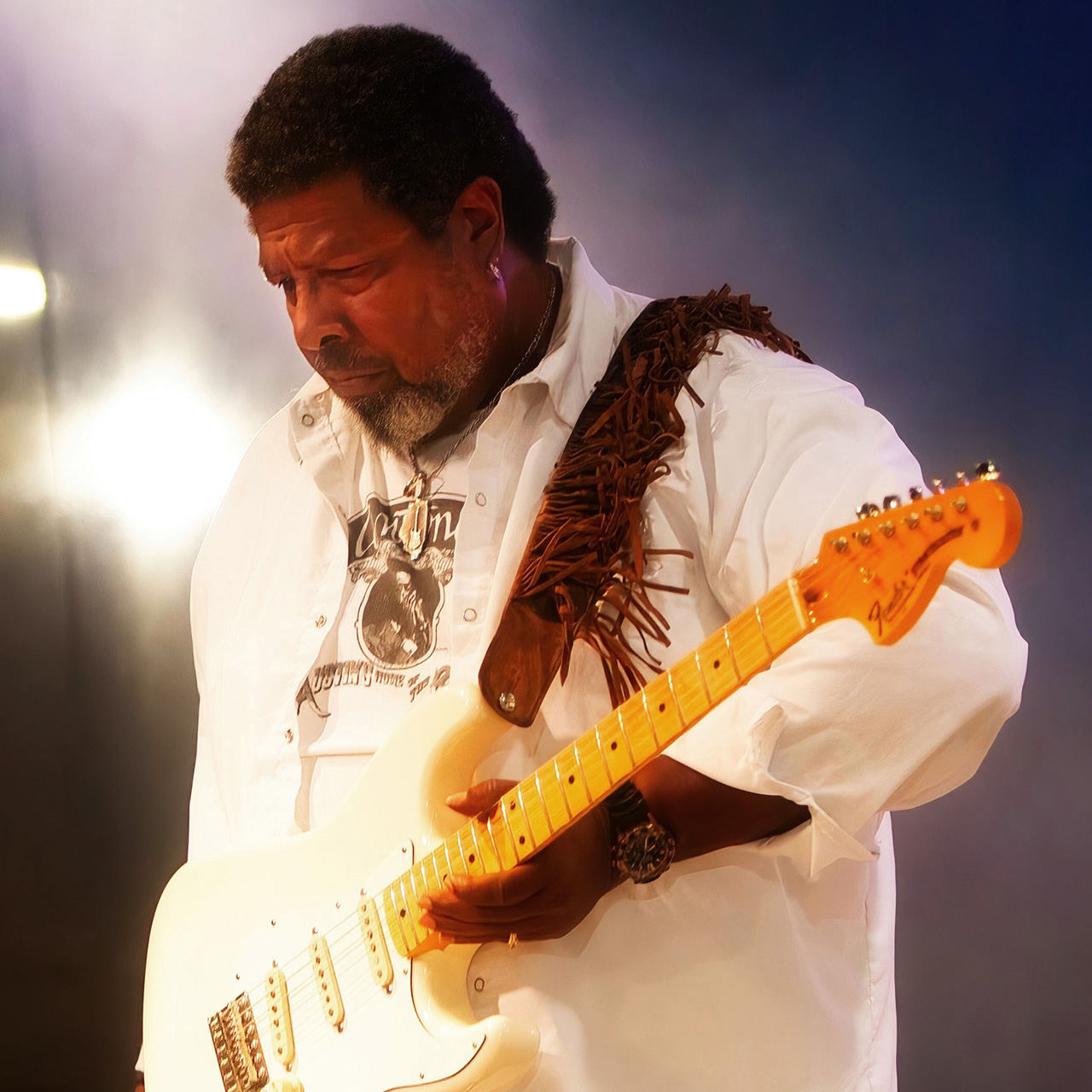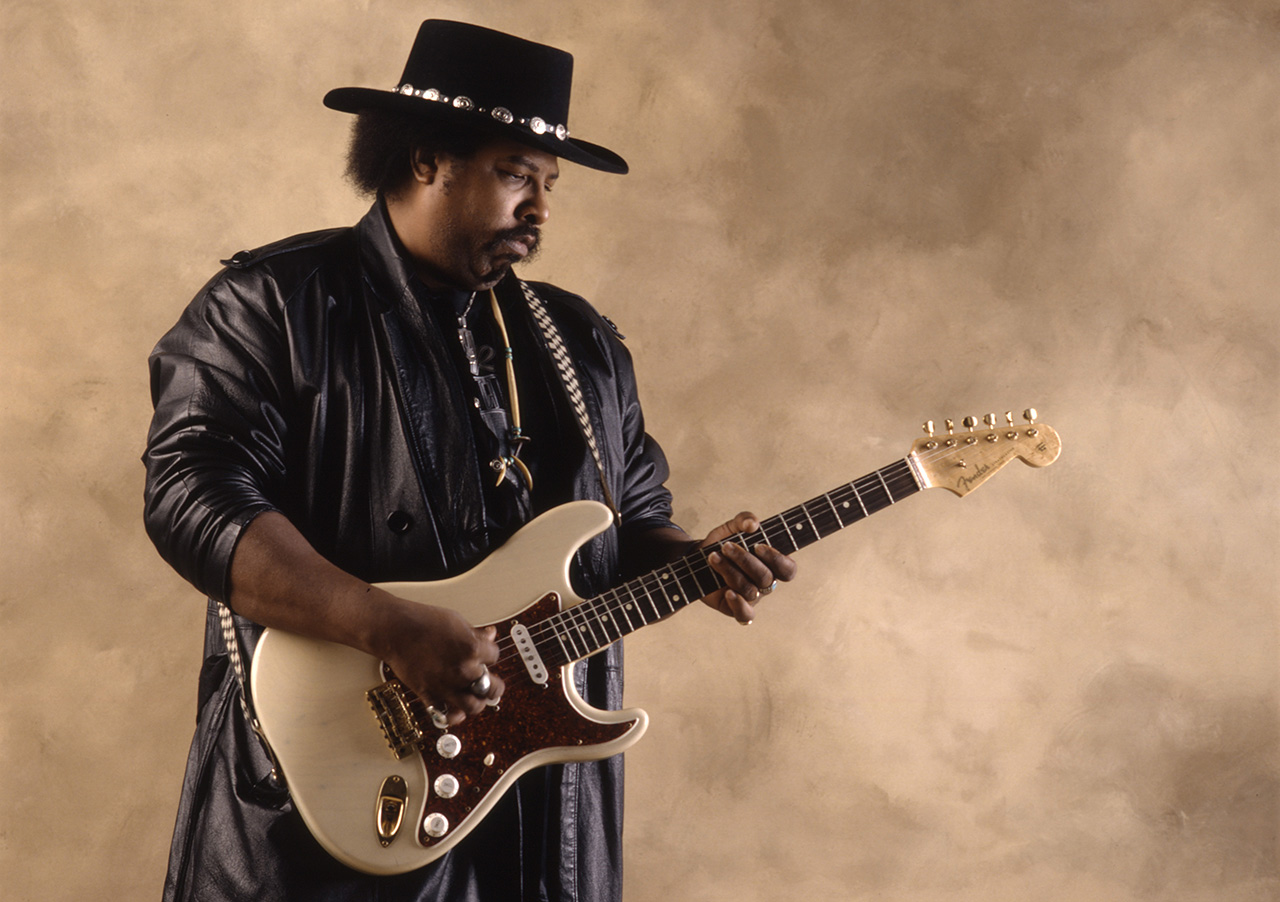“When we finished playing, Bill Clinton came up and introduced himself – with the Secret Service all around. A couple of weeks later, I got this envelope in the mail from the White House”: Jimmy D. Lane was raised among blues greats, but found his own way
The Strat-wielder’s religious moment with Hendrix’s Hey Joe compelled him to spend all his money on a pawn shop guitar… which led to him performing for Bill Clinton, guesting with B.B. King, working with Stevie Ray Vaughan’s Double Trouble and much more

Jimmy D Lane, the son of Chicago guitarist Jimmy Rogers, enjoyed his early induction into the blues.
“Watching him practice around the house, man, that did a thing for me,” he says. “It struck me very curiously, and it gave me the desire to do it. I would watch him and sneak his guitar out from under the bed to play it when he was gone.
“One of those times, I broke a string! I put it back in there thinking, ‘Oh, there’s six strings – he won’t miss that one.’ He told me later that he realized what happened and knew I was curious about it. He didn’t get on me; we laughed about it. He knew I wanted to learn.”
Despite growing up around Rogers, Muddy Waters, Howlin’ Wolf and Albert King, Lane was mostly self-taught.
“I never sat down with Pop,” he says. “I would watch him and listen to records to figure it out. I was trying to figure out what the hell I wanted to do. It wasn’t until I got out of the military that certain sounds started to catch my ear.”
Like many others, it wasn’t the blues that spurred him on, but Jimi Hendrix. “I had a set of headphones and a boombox. I remember Hey Joe came on. I’d heard it a million times – but this time, it sounded different. The only way I can describe it is how preachers know their calling.
“I only had $60 in my pocket, but I ran into a pawn shop in Chicago. I had to buy a guitar. I bought a Harmony – which a guy had carted in because he didn’t have any money – went back to the house and practiced until I figured it out.”
All the latest guitar news, interviews, lessons, reviews, deals and more, direct to your inbox!
By the age of 28 in 1993, he was touring Europe, appearing on late-night TV and performing at the Chicago Blues Festival. Debut record Sir Real arrived in 1995, followed by 1997’s Long Gone. His dad and Hubert Sumlin appeared on 1998’s Legacy, and he performed for President Bill Clinton. Then in 2004 he hooked up with Stevie Ray Vaughan’s Double Trouble for It’s Time.
Since then Lane has kept at it, balancing his father's legacy with perpetual low-key comparisons to Jimi Hendrix. “I got real serious about it,” Lane says. “It came over time. But I’ll tell you: when I knuckled down, I was really able to stretch out.”
Currently on tour, it’s been a long time since his last proper album. “There’s some work that may be coming up in the future,” he says. “I’ll try to put some things together and see what I come up with.”

Even though you're self-taught, with a father like Jimmy Rogers, you must have picked up a few tricks along the way.
“When I first started I would learn a word or a little phrase; then you get a sentence, and maybe put a couple sentences together. When you’re finished you’ve got a paragraph. That’s how I threw it together in my mind for the steps of learning to play.
“All these guys were coming over to have a drink and laugh with the old man. I would be there right in the middle of things, listening to everything that was going on with those guys. My ears were open for it because I was messing with my father’s guitar.”
I could tell Bill Clinton really enjoyed it because he was bobbing his head to the tracks
How did being around blues legends like Muddy Waters, Howlin’ Wolf and Albert King impact how you approached the guitar?
“I didn't really know who these guys were. All my knowledge was made with my eyes – they were just friends of the old man. It was, ‘Oh, there’s Mr Junor… there’s Mr Albert.’ Or, ‘There’s Mr Wolf’ – who scared the hell out of me because he was so big and loud!
You saw them as people before you saw them as legendary artists.
“I didn’t look at them that way until I started playing and listening. That’s when I realized, ‘That's what he sounds like – that's what he’s doing.’”
Once you got serious about it, were you able to incorporate some of that into what you were doing?
“I tried my best to take all the things I heard and hone them with what I was doing to create a sound. To this day I don’t know if I created a sound – but I’ve tried.”
Once you got rolling in the ‘90s, you found yourself in the post-Stevie Ray Vaughan blues landscape, which saw artists like Buddy Guy and others find a second life. What was your perspective then?
“Stevie did pretty much the same thing I’ve been talking about. He listened to those guys – especially Albert King and Hubert Sumlin. He took their sound and created a sound much like Hendrix did back.
“There was a big soul revival in the ‘60s, with some great music that was a good step forward for black musicians. But blues had kind of died out in the era of my father; the money kind of died out. But in the ‘80s, with the Texas Flood album, Stevie busted things wide open. A lot of other musicians came on after that, like Robert Cray; and even Eric Clapton came back.”
How did you wind up playing for Bill Clinton?
“There was a convention or some type of speech here in Chicago, and the drummer I had at the time was doing the booking for the band. Somebody he knew said, ‘Hey, do you want to perform for the Clintons?’ They were having a little gathering at City Hall, and we did it.
“When we finished, Bill came up and introduced himself – with the Secret Service all around . He’s a saxophone player, so he was into music. We shook hands and I went to another gig.
B.B. King had a line of guitar players up there… all those guys respected my father, which is a very beautiful thing
“But a couple of weeks later, I got this manilla envelope in the mail from the White House. It was a letter from him thanking me for the performance and the music. That blew me away. It was fun. I could tell he really enjoyed it because he was bobbing his head to the tracks we did!”
Then in 1999 you found yourself in Montreux, Switzerland, with B.B. King.
“I’d played there with the Jimmy Rogers tribute the day before. I was due back in the States, and I got called up in the hotel room – ‘Hey, B.B. wants you to play,’ I had to rebook my return flight.

“It was a very exciting experience, and very humbling to be in the presence of a cat like B.B. King. He had a line of guitar players up there. We got up to jam for the encore, and we all went down the line, and he gave everybody a chance to solo.
“Gary Moore was there too – he played his thing and we jammed there. I was actually sitting next to Gary for that. But all those guys respected my father, which is a very beautiful thing, man.”
How did you end up recording It’s Time with Double Trouble?
“The label I was on at the time, APO, had something to do with that. I was visiting the director and we were thinking about the next project. They contacted Eddie Kramer, who was into it, and we said, ‘Okay, who do we want?’
“We thought about Mitch Mitchell and Billy Cox. Billy was good to go, but Mitch's wife said, ‘No, he’s tired and he’s going to stay in England for a while.’ I said, ‘How about Double Trouble?’ I liked how Chris Layton and Tommy Shannon played together. We contacted them and they were available.”
“Man, it was a fun session. We got all kinds of other bad people; we went on down to Blue Heaven Studios and knocked that record out in about two weeks. I don’t think Tommy is playing anymore; he’s got some issues with his hand. But we had a blast making that record.”
What gear have you leaned on most along the way?
“A Fender Strat is my weapon of choice. I have a Vox amp because I like feeling of the tubes. You know that warm tone you get from tube amps – I like the Vox because the electronics are good and I can get the warmth.
“I’ve got a Boss Blues Driver pedal, and for a couple of songs I use a Jim Dunlop Rotovibe [chorus/vibrato]. I can switch from doing Chicago blues to urban blues and right into other stuff with that very easy setup.”
If you’re gonna play Chicago blues, you have to go to the few people who created the sound
In 2013, you were inducted into the Chicago Blues Hall of Fame. Given that it’s your hometown, that must have been gratifying.
“If you’re gonna play Chicago blues, you have to go to the few people who created the sound. It’s a very deep sound, rhythmically and emotionally. It’s not just me, man – everybody that’s playing blues guitar should acknowledge that sound.
“Chicago blues is very influential, especially the circular guitar chords and leads that were played. I learned it from my pop. It’s certain rhythms and not getting in the way. If there’s a harmonica player, you don’t step on what he’s doing. If he’s doing solos, you get under him and play chords in certain fashions that feed emotion, timing and sounds.”
- For more information, head to Jimmy D. Lane.
Andrew Daly is an iced-coffee-addicted, oddball Telecaster-playing, alfredo pasta-loving journalist from Long Island, NY, who, in addition to being a contributing writer for Guitar World, scribes for Bass Player, Guitar Player, Guitarist, and MusicRadar. Andrew has interviewed favorites like Ace Frehley, Johnny Marr, Vito Bratta, Bruce Kulick, Joe Perry, Brad Whitford, Tom Morello, Rich Robinson, and Paul Stanley, while his all-time favorite (rhythm player), Keith Richards, continues to elude him.




